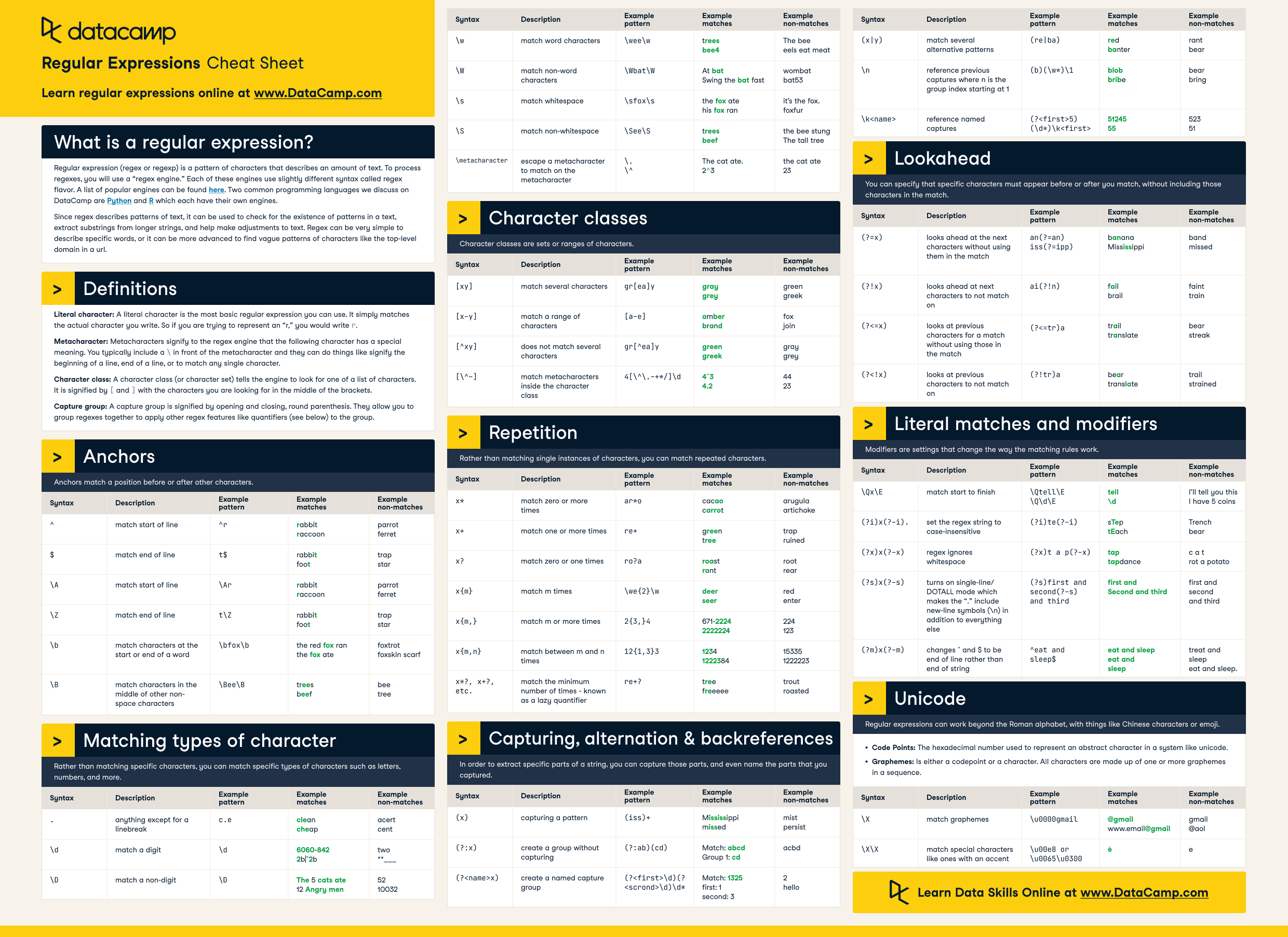Regular Expressions Cheat Sheet
Regular expressions (regex or regexp) are a pattern of characters that describe an amount of text. Regular expressions are one of the most widely used tools in natural language processing and allow you to supercharge common text data manipulation tasks.
Oct 2022
RelatedSee MoreSee More
How to Use the NumPy linspace() Function
Learn how to use the NumPy linspace() function in this quick and easy tutorial.
Adel Nehme
Python Absolute Value: A Quick Tutorial
Learn how to use Python's abs function to get a number's magnitude, ignoring its sign. This guide explains finding absolute values for both real and imaginary numbers, highlighting common errors.
Amberle McKee
How to Check if a File Exists in Python
Learn how to check if a file exists in Python in this simple tutorial
Adel Nehme
Writing Custom Context Managers in Python
Learn the advanced aspects of resource management in Python by mastering how to write custom context managers.
Bex Tuychiev
How to Convert a List to a String in Python
Learn how to convert a list to a string in Python in this quick tutorial.
Adel Nehme
How to Transpose a Matrix in R: A Quick Tutorial
Learn three methods to transpose a matrix in R in this quick tutorial
Adel Nehme
